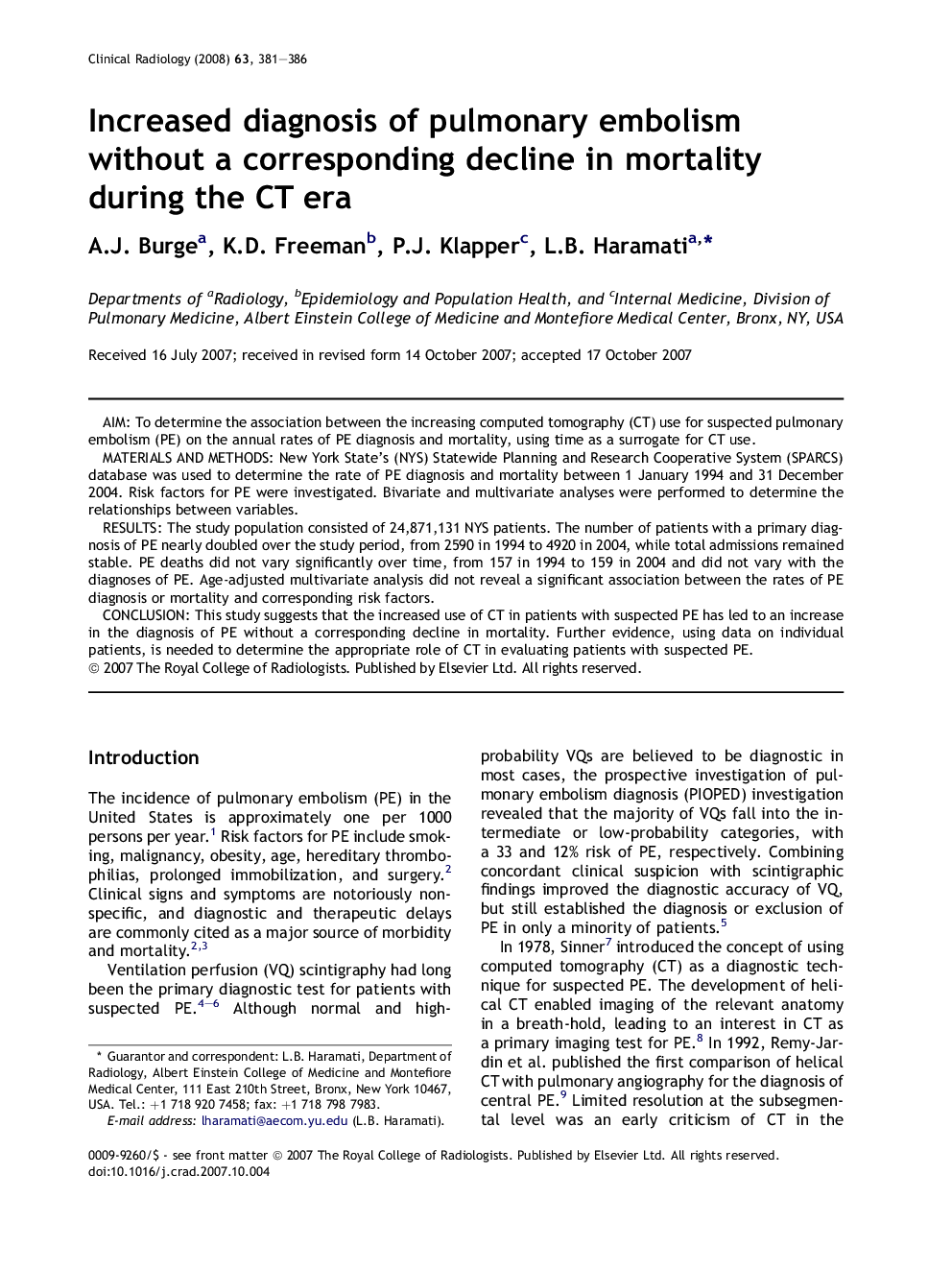| Article ID | Journal | Published Year | Pages | File Type |
|---|---|---|---|---|
| 3983094 | Clinical Radiology | 2008 | 6 Pages |
AimTo determine the association between the increasing computed tomography (CT) use for suspected pulmonary embolism (PE) on the annual rates of PE diagnosis and mortality, using time as a surrogate for CT use.Materials and MethodsNew York State's (NYS) Statewide Planning and Research Cooperative System (SPARCS) database was used to determine the rate of PE diagnosis and mortality between 1 January 1994 and 31 December 2004. Risk factors for PE were investigated. Bivariate and multivariate analyses were performed to determine the relationships between variables.ResultsThe study population consisted of 24,871,131 NYS patients. The number of patients with a primary diagnosis of PE nearly doubled over the study period, from 2590 in 1994 to 4920 in 2004, while total admissions remained stable. PE deaths did not vary significantly over time, from 157 in 1994 to 159 in 2004 and did not vary with the diagnoses of PE. Age-adjusted multivariate analysis did not reveal a significant association between the rates of PE diagnosis or mortality and corresponding risk factors.ConclusionThis study suggests that the increased use of CT in patients with suspected PE has led to an increase in the diagnosis of PE without a corresponding decline in mortality. Further evidence, using data on individual patients, is needed to determine the appropriate role of CT in evaluating patients with suspected PE.
